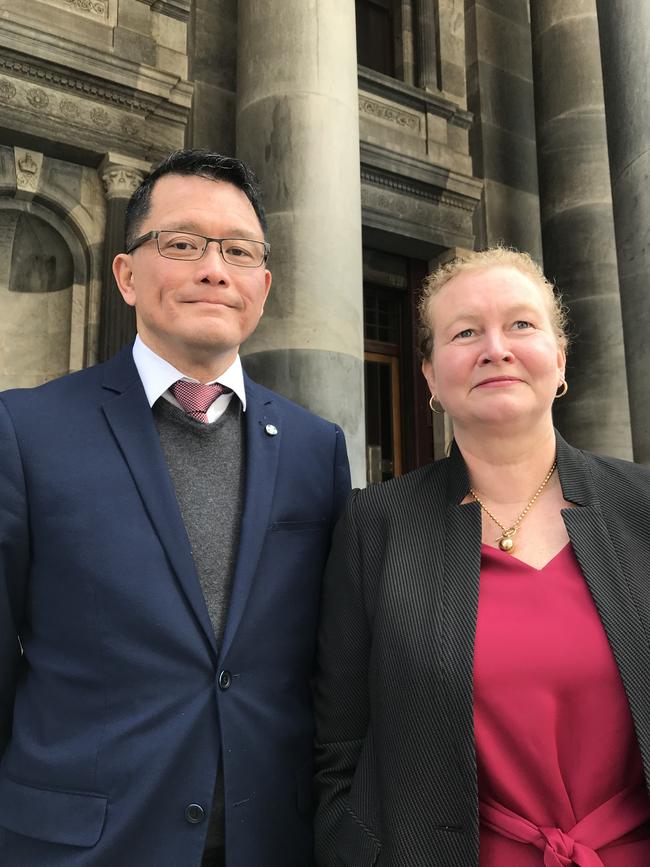‘SA Health rotting from the head’: Australian Medical Association state president Dr Chris Moy
SA Health has allowed a toxic culture of bullying to fester and generations of clinicians have suffered, the state’s top doctor has declared in an extraordinary attack on our health system — and there’s one hospital that’s worse than the rest.
SA News
Don't miss out on the headlines from SA News. Followed categories will be added to My News.
- Bullying and harassment rife in SA Pathology offices, staff say
- ICAC report finds SA public service rife with bullying
- The Advertiser +Rewards — giveaways, special offers and comps
A “toxic” culture of bullying is festering within SA Health and the $2.4 billion Royal Adelaide Hospital is the worst offender, Australian Medical Association state president Dr Chris Moy claimed.
In a blistering attack, he told a parliament inquiry into workplace bullying in hospitals and health services that “the fish has been rotting from the head with respect to SA Health”.
He said the AMA was “drawing a line in the sand” on bullying and he apologised to generations of clinicians for the negative culture they had endured.

He also announced an AMA summit on culture and bullying, supported by Health and Wellbeing Minister Stephen Wade, as a lightning rod to reduce bullying and workplace fatigue, which drives bad as well as risky behaviour.
Dr Moy gave examples of bullying including a doctor who asked another doctor for help admitted a patient and was told to “f... off”.
“Other colleagues say this happens all the time,” Dr Moy told the committee, quoting research showing 70 per cent of junior surgeons say they have been bullied.
“There are terrible consequences psychologically and for mental health. It’s been an acceptable culture that corrupts morale and team work and compromises patient care.”
Dr Moy said long days were needed for adequate surgical training but he wants to see a maximum working week of 55-65 hours.
AMA SA chief executive Dr Samantha Mead added that the issue was not necessarily the number of hours but when they were worked, asking: “do they get adequate breaks and opportunity for sleep, because fatigue is like the effects of alcohol which can compromise patient safety.”
Dr Moy said bullying could be driven by fatigue and it included a tradition of senior doctors taking a hard line on juniors on the basis that “teaching by humiliation works and there is a need to harden up junior doctors”.
Dr Moy singled our the RAH, saying a lack of leadership and chain of command, the focus on the building rather than people, and inadequate resources allowed fatigue and bullying to fester to a point where reports of bullying were clearly higher than elsewhere.
He stressed the role of resources and fatigue, giving the example of a rural hospital where a ward was doubled in size with no change to staffing but there was an expectation the work could be covered.
Dr Moy outlined a number of potential solutions, starting with acknowledging the issue, and named help with workplace mental health and a new approach to leadership as two vital steps.
“We need to redevelop and support positive leadership,” he said, noting the best “player” does not always make the best captain.
Her said eminent surgeons may not be the best leaders but also have to combine managing a unit with their clinical work, “which leads to chaos”.

